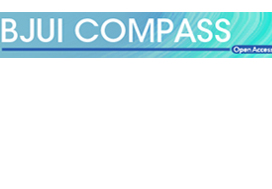BJUI Compass and open access
There is no doubt that the publishing landscape is rapidly changing around us. The BJUI is a world leading surgical journal, serving 10 international organisations, with 90 years of history (1929–2019). So why are we launching, BJUI Compass an online, open access (OA) journal, now?
In September 2018, cOAlition S, a predominantly European consortium of research funders, launched Plan S. In its current form, this plan requires that from 2021, scientific publications from research funded by public grants through funders who have signed up to cOAlition S must be published in full OA journals or platforms. This is a model whereby publication of science is paid for by authors, or their funders, rather than by readers to whom access is free [1]. The Wellcome Trust, one of the largest funders of research in the UK, is a major supporter of Plan S and has its own OA policy for 2021 [2].
However, the practical implementation of Plan S continues to be a subject of debate. In other parts of the world, there is increasing interest in OA but the approach to implementation is likely to vary considerably. Our own publisher, Wiley, in readiness for Plan S, announced an agreement with Projekt DEAL, a representative of nearly 700 academic institutions in Germany [3]. Most academic institutions in Germany under this project can publish articles in OA or hybrid journals published by Wiley, including BJUI, a hybrid journal. These initiatives in OA are another factor in the increasing debate about scientific impact, bibliometrics beyond the impact factor, and translating research for public benefit rather than purely the career progression of academics [4].
Dr John W. Davis (@jdhdavis)
In keeping with our continued theme of the highest quality, clinically relevant papers, in this issue of the BJUI we present two MRI‐based prostate cancer papers, showing that while we could avoid biopsies in many men without missing significant disease [5], in African‐American men on active monitoring, the cancers can be upgraded more frequently and careful follow‐up is thus warranted [6].
by Prokar Dasgupta and John W. Davis
References
- cOAlition S. Plan S: Making full and immediate Open Access a reality. Available at: https://www.coalition-s.org/. Accessed October 2019
- Wellcome. Open access policy 2021. Available at: https://wellcome.ac.uk/funding/guidance/open-access-policy. Accessed October 2019
- Wiley. Wiley and Projekt DEAL partner to enhance the future of scholarly research and publishing in Germany. Available at: https://newsroom.wiley.com/press-release/all-corporate-news/wiley-and-projekt-deal-partner-enhance-future-scholarly-research-an. Accessed October 2019
- , , , , . Bibliometrics: The Leiden Manifesto for research metrics. Nature 2015; 520: 429– 31
- , , et al. Multiparametric magnetic resonance imaging and follow‐up to avoid prostate biopsy in 4259 men. BJU Int 2019; 124: 775– 84
- , , et al. Use of multiparametric magnetic resonance imaging and fusion‐guided biopsies to properly select and follow African‐American men on active surveillance. BJU Int 2019; 124: 768– 74









